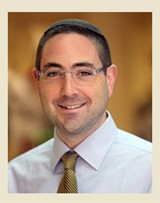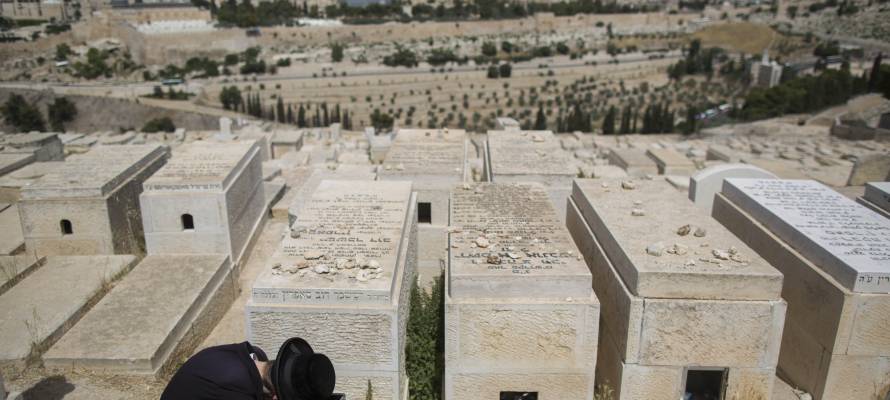

By Rabbi Ari Enkin, rabbinic director, United with Israel
The Mount of Olives is rich with Jewish history and significance dating back to biblical times, yet in the modern era the site has been vandalized, ancient cemeteries were destroyed and Jews are continually attacked by local Arabs.
The Mount of Olives – Har Hazeitim, in Hebrew – is a mountain ridge east of and adjacent to the Old City of Jerusalem. It is named for the olive groves that once covered its slopes. The Mount of Olives has been used as a Jewish cemetery for over 3,000 years. It contains over 150,000 graves, including tombs traditionally associated with the prophet Zechariah and King David’s son Absalom. On the upper slope, the traditional Tomb of the prophets Haggai, Zechariah and Malachi are situated.
A religious ceremony marking the start of a new month was held on the Mount of Olives in the days of the Second Temple. Roman soldiers camped on the Mount during the siege of Jerusalem in the year 70 AD. After the destruction of the Second Temple, the Mount of Olives became a center of pilgrimage because it was 80 meters higher than the Temple Mount and offered a panoramic view of the Temple site. It also became a traditional location for lamenting the Temple’s destruction, especially on Tisha B’Av – the ninth day of the Hebrew month of Av, the anniversary of the destruction of the First and Second Temples – until this very day. In 1481, an Italian Jewish pilgrim, Rabbi Meshullam da Volterra, wrote:
“And all the community of Jews, every year, goes up to Mount Zion on the day of Tisha B’Av to fast and mourn, and from there they move down along Yoshafat Valley and up to Mount of Olives. From there they see the entire Temple [Mount] and there they weep and lament the destruction of this House.”
The Mount of Olives in the Modern Era
The armistice agreement signed by Israel and Jordan following the 1948 Arab-Israeli War called for the establishment of a Special Committee to negotiate developments, including “free access to the holy sites and cultural institutions and use of the cemetery on the Mount of Olives.” During the 19 years of Jordanian occupation of Judea and Samaria, however, the committee was not formed. Non-Israeli Christian pilgrims were allowed to visit the Mount, but Jews of all countries and most non-Jewish Israeli citizens were barred from entering Jordan, and therefore were unable to tour the area.

An Israeli soldier places the Israeli flag on the grave of fallen Israeli soldiers during a ceremony held at the Mount of Olives in preparation for Memorial Day. (Yonatan Sindel/Flash90)
By the end of 1949 and throughout the Jordanian occupation of the site, Arab residents uprooted tombstones and plowed the land. Over 38,000 tombstones were damaged by the Jordanians. Furthermore, four roads were paved through the cemeteries. Jordan’s King Hussein permitted the construction of the Intercontinental Hotel at the summit of the Mount of Olives together with a road that cut through the cemetery, which destroyed hundreds of Jewish graves, some from the First Temple period. Graves were also demolished for parking lots and a filling station and were even used for latrines at a Jordanian army barracks. Nonetheless, the United Nations never condemned the Jordanian government for this desecration. To this very day, the Jewish cemetery on the Mount of Olives is regularly targeted by vandals. Mourners are frequently assaulted during funeral processions.
Notable rabbis from the 15th century up until the present as well as are buried on the Mount of Olives. Prominent figures representing Modern Zionist include, among many others, Rabbi Avraham Yitzhak Kook, the first Ashkenazi Chief Rabbi of the State of Israel; Henrietta Szold, founder of the Hadassah organization; Eliezer Ben-Yehuda, the father of modern Hebrew; Shmuel Yosef Agnon, Israeli Nobel laureate for literature, and Menachem Begin, Israel’s sixth prime minister.
The Mount of Olives in the Bible
The Mount of Olives is first mentioned in connection with David’s flight from Absalom (II Samuel 15:30): “And David went up by the ascent of the Mount of Olives, and wept as he went up.” This ascent was probably east of the City of David, near what is now the village of Silwan. The sacred character of the mount is alluded to in Ezekiel (11:23): “And the glory of the Lord went up from the midst of the city and stood upon the mountain, which is on the east side of the city.”
The Mount of Olives may be most famous for the apocalyptic prophecy in the Book of Zechariah stating that God will stand on the Mount of Olives and the mountain will split in two, with one half shifting north and the other half shifting south (Zechariah 14:4). Many Jews have wanted to be buried on the Mount of Olives since antiquity, based on the Jewish tradition that when the Messiah comes, the resurrection of the dead will begin from the Mount of Olives.
